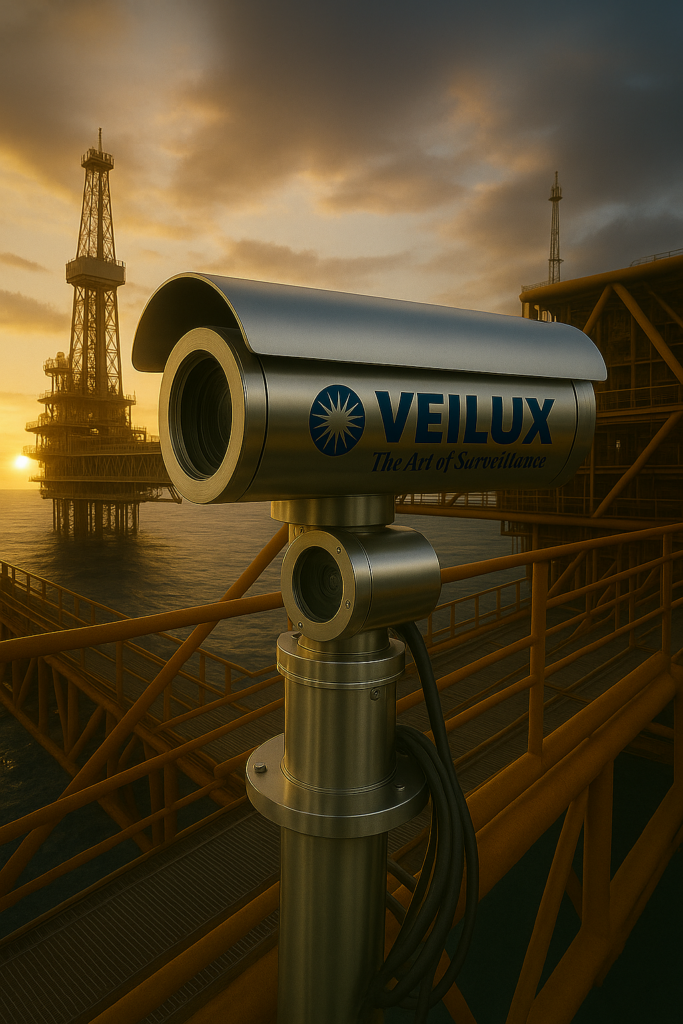Introduction
In hazardous industries, safety is everything. Whether it’s an oil refinery, chemical plant, or offshore drilling site, one small spark can lead to catastrophic consequences. That’s why explosion-proof surveillance systems play such a critical role in protecting workers, equipment, and facilities.
Unlike regular cameras, these specialized systems are built to withstand and contain ignition sources, ensuring they don’t trigger explosions in flammable environments. But to truly guarantee safety and compliance, these cameras must be certified according to international safety standards.
In this guide, we’ll break down what certification means, which compliance standards to look for, and how to properly implement explosion-proof surveillance systems in your facility.
Understanding Certifications
If you operate in environments where flammable gases, vapors, or dusts are present, it’s not enough to install just any camera. You need certified explosion-proof surveillance systems, and that certification proves your equipment meets global safety standards.
Why Certification Matters
Certification ensures your system has been tested to contain or isolate any internal sparks or heat that could ignite the surrounding atmosphere. Without it, you risk not only your equipment but also the safety of your entire operation.
Common Certifications to Know
ATEX (Atmosphères Explosible) – Required in the European Union for equipment used in explosive environments.
IECEx (International Electrotechnical Commission System for Certification) – Globally recognized certification for explosion-proof equipment.
UL / CSA (Underwriters Laboratories & Canadian Standards Association) – North American standards for safe, explosion-proof products.
You can learn more about these international standards directly from IEC and ANSI.
Each certification ensures the camera can safely operate in specific hazardous zones, such as Zone 1 or Zone 2 (for gas environments) and Zone 21 or Zone 22 (for dust environments).
When choosing explosion-proof equipment, always check that the camera’s certification matches your environment’s classification.
Compliance Guidelines
Having the right certification is just the beginning. To remain compliant, you must also follow strict installation, maintenance, and documentation guidelines for your explosion-proof surveillance systems.
1. Match Certification to Hazard Level
Verify that your system meets the exact zone or division rating where it’s installed.
- Zone 1 / Division 1: Areas where flammable materials are present frequently.
- Zone 2 / Division 2: Areas where flammable materials are unlikely but possible.
2. Use Proper Cabling and Housings
Every component, not just the camera, must be explosion-proof. This includes enclosures, connectors, and cables. Housings must be tightly sealed to prevent flammable gases or dust from entering.
3. Document and Inspect Regularly
Routine inspections are critical. Keep detailed logs of installation, maintenance, and certifications for each device. Documentation shows regulatory compliance and ensures ongoing safety.
4. Choose Weather-Resistant Systems
For outdoor or offshore use, make sure your cameras can handle extreme temperatures, humidity, and corrosion. Certified stainless steel housings are ideal for these conditions.
For more details on explosion-proof camera solutions and safety compliance, visit Veilux.net, a trusted leader in certified explosion-proof surveillance systems for hazardous environments.
Best Practices for Installation and Maintenance
Once your explosion-proof surveillance system is installed, proper maintenance ensures long-term performance and safety.
1. Hire Qualified Technicians
Installation should only be performed by certified professionals familiar with hazardous area standards. A single mistake during setup can compromise the entire system’s safety.
2. Select the Right Camera Type
Different facilities have different monitoring needs.
- Oil & gas: PTZ (pan-tilt-zoom) cameras for wide coverage.
- Chemical plants: Fixed lens cameras for specific zones.
- Food & grain: Dust-proof cameras with anti-corrosion housings.
3. Schedule Regular Maintenance
Regular cleaning and inspection prevent dust buildup, corrosion, and moisture intrusion, which can degrade performance over time.
4. Embrace Smart Technology
Modern explosion-proof surveillance systems come with features like:
- Remote monitoring via secure networks
- Motion detection and AI analytics
- Low-light and thermal imaging
These upgrades improve both safety and operational efficiency.
5. Train Your Staff
Your team should know how to safely operate and maintain the system. Ongoing safety training prevents misuse and extends the equipment’s lifespan.
6. Always Have a Backup Plan
If a camera fails, your operation shouldn’t lose visibility. Implement redundancy with overlapping camera zones or backup recording systems.
Conclusion: Protect What Matters with Certified Systems
Choosing certified explosion-proof surveillance systems isn’t just about meeting regulations, it’s about protecting your people, property, and production.
When you invest in certified cameras, you ensure compliance with organizations like IEC, ANSI, and UL, while also guaranteeing performance under the toughest industrial conditions.
For dependable and fully certified systems, Veilux provides advanced explosion-proof cameras built for safety and clarity in hazardous zones.
👉 Visit Veilux.net to explore models, get expert advice, or book a consultation on certified explosion-proof surveillance systems today.
Frequently Asked Questions (FAQ)
Q1: What makes a surveillance system “explosion-proof”?
Explosion-proof systems are designed to contain internal explosions and prevent ignition of the external environment. Their housings are made from heavy-duty materials and tested for extreme conditions.
Q2: Are explosion-proof cameras required in oil and gas facilities?
Yes. Most oil and gas facilities require explosion-proof surveillance in classified hazardous zones to comply with OSHA, IEC, or ANSI safety standards.
Q3: How often should I inspect or maintain my explosion-proof camera?
It’s recommended to perform inspections every 6–12 months, depending on your environment and certification type.
Q4: Can explosion-proof surveillance systems work in extreme weather?
Absolutely. Many certified systems, like those from Veilux, are engineered for harsh outdoor conditions, including high temperatures, humidity, and corrosion exposure.
Q5: Where can I buy certified explosion-proof surveillance systems?
You can find trusted, fully certified models at Veilux.net , a leading provider of explosion-proof and industrial surveillance solutions.

